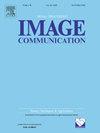Auxiliary captioning: Bridging image–text matching and image captioning
IF 2.7
3区 工程技术
Q2 ENGINEERING, ELECTRICAL & ELECTRONIC
引用次数: 0
Abstract
The image–text matching task, where one query image (text) is provided to seek its corresponding text (image) in a gallery, has drawn increasing attention recently. Conventional methods try to directly map the image and text to one latent-aligned feature space for matching. Achieving an ideal feature alignment is arduous due to the fact that the significant content of the image is not highlighted. To overcome this limitation, we propose to use an auxiliary captioning step to enhance the image feature, where the image feature is fused with the text feature of the captioning output. In this way, the captioning output feature, sharing similar space distribution with candidate texts, can provide high-level semantic information to facilitate locating the significant content in an image. To optimize the auxiliary captioning output, we introduce a new metric, Caption-to-Text (C2T), representing the retrieval performance between the auxiliary captioning output and the ground-truth matching texts. By integrating our C2T score as a reward in our image captioning reinforcement learning framework, our image captioning model can generate more suitable sentences for the auxiliary image–text matching. Extensive experiments on MSCOCO and Flickr30k demonstrate our method’s superiority, which achieves absolute improvements of 5.7% (R@1) on Flickr30k and 3.2% (R@1) on MSCOCO over baseline approaches, outperforming state-of-the-art models without complex architectural modifications.
辅助字幕:连接图像-文本匹配和图像字幕
图像-文本匹配任务是指提供一个查询图像(文本),在图库中查找相应的文本(图像),近年来越来越受到关注。传统的方法是直接将图像和文本映射到一个潜在对齐的特征空间进行匹配。由于图像的重要内容没有突出显示,实现理想的特征对齐是艰巨的。为了克服这一限制,我们建议使用辅助字幕步骤来增强图像特征,其中图像特征与字幕输出的文本特征融合。这样,与候选文本共享相似空间分布的字幕输出特征可以提供高层次的语义信息,便于定位图像中的重要内容。为了优化辅助字幕输出,我们引入了一个新的度量,标题到文本(C2T),表示辅助字幕输出和真实匹配文本之间的检索性能。通过将我们的C2T分数作为奖励集成到我们的图像字幕强化学习框架中,我们的图像字幕模型可以为辅助的图像-文本匹配生成更多合适的句子。在MSCOCO和Flickr30k上进行的大量实验证明了我们的方法的优越性,与基线方法相比,在Flickr30k上实现了5.7% (R@1)的绝对改进,在MSCOCO上实现了3.2% (R@1)的绝对改进,在没有复杂架构修改的情况下优于最先进的模型。
本文章由计算机程序翻译,如有差异,请以英文原文为准。
求助全文
约1分钟内获得全文
求助全文
来源期刊

Signal Processing-Image Communication
工程技术-工程:电子与电气
CiteScore
8.40
自引率
2.90%
发文量
138
审稿时长
5.2 months
期刊介绍:
Signal Processing: Image Communication is an international journal for the development of the theory and practice of image communication. Its primary objectives are the following:
To present a forum for the advancement of theory and practice of image communication.
To stimulate cross-fertilization between areas similar in nature which have traditionally been separated, for example, various aspects of visual communications and information systems.
To contribute to a rapid information exchange between the industrial and academic environments.
The editorial policy and the technical content of the journal are the responsibility of the Editor-in-Chief, the Area Editors and the Advisory Editors. The Journal is self-supporting from subscription income and contains a minimum amount of advertisements. Advertisements are subject to the prior approval of the Editor-in-Chief. The journal welcomes contributions from every country in the world.
Signal Processing: Image Communication publishes articles relating to aspects of the design, implementation and use of image communication systems. The journal features original research work, tutorial and review articles, and accounts of practical developments.
Subjects of interest include image/video coding, 3D video representations and compression, 3D graphics and animation compression, HDTV and 3DTV systems, video adaptation, video over IP, peer-to-peer video networking, interactive visual communication, multi-user video conferencing, wireless video broadcasting and communication, visual surveillance, 2D and 3D image/video quality measures, pre/post processing, video restoration and super-resolution, multi-camera video analysis, motion analysis, content-based image/video indexing and retrieval, face and gesture processing, video synthesis, 2D and 3D image/video acquisition and display technologies, architectures for image/video processing and communication.
 求助内容:
求助内容: 应助结果提醒方式:
应助结果提醒方式:


